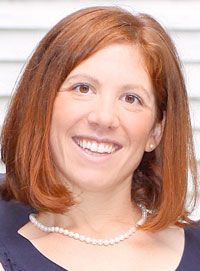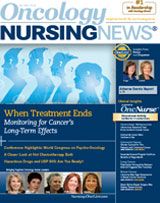As Clinics Await USP 800, Focus Must Remain on Collaboration and Awareness at All Levels
As the new USP Chapter 800 regulations for the handling of hazardous drugs are being finalized, stakeholders-including oncology nurses-are preparing for a renewed emphasis on the safe preparation and administration of chemotherapy in their daily practice.
AnnMarie Walton, PhD, MPH, RN, OCN, CHES

As the new USP Chapter 800 regulations for the handling of hazardous drugs are being finalized, stakeholders—including oncology nurses—are preparing for a renewed emphasis on the safe preparation and administration of chemotherapy in their daily practice.
Although the comment period for USP 800 ended May 31, 2015, the timetable for when the final chapter will be issued remains uncertain. In the meantime, the proposed regulations have already prompted professional societies like the Oncology Nursing Society (ONS), the American Society of Clinical Oncology, and the Hematology/Oncology Pharmacy Association to issue a joint position statement to help educate their members about safe handling and also requesting that practices be given enough time to implement the new safe practice standards.
Among the key safety protocols in the proposed USP 800, is the requirement that nurses administering hazardous drugs to patients use closed-system transfer devices (CSTDs). In the current draft USP 800, explained Stephen Eckel, PharmD, MHA, BCPS, use of CTSDs is only a recommendation for pharmacy, despite the positive data pointing to their mechanism as a means to reduce occupational exposure. Eckel is a clinical associate professor at the University of North Carolina Eshelman School of Pharmacy and associate director of pharmacy at University of North Carolina Hospitals, Chapel Hill.
“These devices are very important when it comes to preparation and administration, and I think our practice has improved since we started using them,” explained AnnMarie Walton, PhD, MPH, RN, OCN, CHES. “They help us to keep safety in mind, and they have been more functional than anything we’ve used in the past.”
Walton is currently a postdoctoral fellow at the University of North Carolina (UNC) at Chapel Hill, where her research is focusing specifically on antineoplastic exposure among nursing assistants working within an interdisciplinary team.
Her passion for raising awareness of the risks of occupational exposure to hazardous drugs was actually cultivated years earlier, beginning in 2009, while working as a clinical nurse in hematology/oncology for UNC Health Care.
It was at that time when she and her nursing colleagues undertook a comprehensive examination of how hospital policy aligned with the 2004 NIOSH Alert: Preventing Occupational Exposures to Antineoplastic and Other Hazardous Drugs in Health Care Settings, which continues to be the exemplar for safe practice.
Her clinical practice group found that while they were doing really well in some areas of nursing, improvements were needed in several areas, among them: the use of plastic-backed pads to prevent spray when flushing the toilet, failure to exclusively use chemo-rated gloves in oncology areas, and a lack of signage informing all healthcare personnel and family members that a patient had received a hazardous drug within the last 48 hours.
“We also didn’t have good education for our nursing assistants and housekeeping or for patients and their families at home,” Walton explained, and her working group was able to enlist institutional support for a number of needed safety improvements.
Walton has shared the lessons learned from this advocacy and consensus-building experience before many audiences, including the North Carolina Nurses Association, the North Carolina Organization of Nurse Leaders, and her local Triangle ONS chapter, as well as in an article published in the Clinical Journal of Oncology Nursing.1
North Carolina is one of only a few states which have enacted their own more stringent hazardous drug handling safety standards, and Walton is an ardent advocate for safe handling of hazardous drugs at the local, state, and national level.
She continues to present on the topic to help other nurse stakeholders improve their skills in advocating for safe handling in their workplaces. In her talks, Walton underscores the fact that more than 8 million healthcare workers handle hazardous drugs annually, and even at low exposures, they can result in allergies, acute toxicities, developmental problems, reproductive problems (including miscarriage), and increased risk of cancer.
More and more individuals are coming into contact with these agents, Walton stressed, among them, family members, assistive personnel, and housekeeping, and antineoplastic drugs are being administered in long-term care and home settings.
USP 800, while important, isn’t enough, said Walton.
“My issue with USP 800 from a nursing perspective is that it really stops at administration of the drug ... we’re safer both on the pharmacy prep side and the administration side for nurses ... but there are a whole slew of healthcare personnel who aren’t completely covered—including nursing assistants—really anyone who deals with excreta, post-administration.”
Another question surrounding USP 800 is who will enforce it, noted Eckel. Boards of pharmacies enforce its compounding standards, but they inspect only pharmacies. “USP 800, while good in intent, might not intersect in all places where the risk of exposure to hazardous drugs exists.”
Both experts concur that while USP 800 is a step in the right direction, state regulations are still necessary, and building safety awareness through education should be an ongoing priority. Notes Eckel:
“The effort is not going to work as well if a pharmacy just goes and does it on its own, or nurses are working on this on their own. We need a collaborative approach ... using all the strategies to introduce and sustain a culture of safety in an organization.”
“Then, over time, as institutions continue to educate and enforce—even when staff turns over—the whole culture will develop where it’s become second nature.”
REFERENCES
1. Walton AM, Mason S, Busshart M, et al. Safe handling: implementing hazardous drug precautions. Clin J Oncol Nurs. 2012;16(3):251-254.

Innovative Program Reduces Nurse Turnover and Fosters Development
Published: September 12th 2024 | Updated: September 12th 2024The US Oncology Network (The Network) has developed one of the most comprehensive programs in the nation to support the professional development and retention of new oncology nurses.


